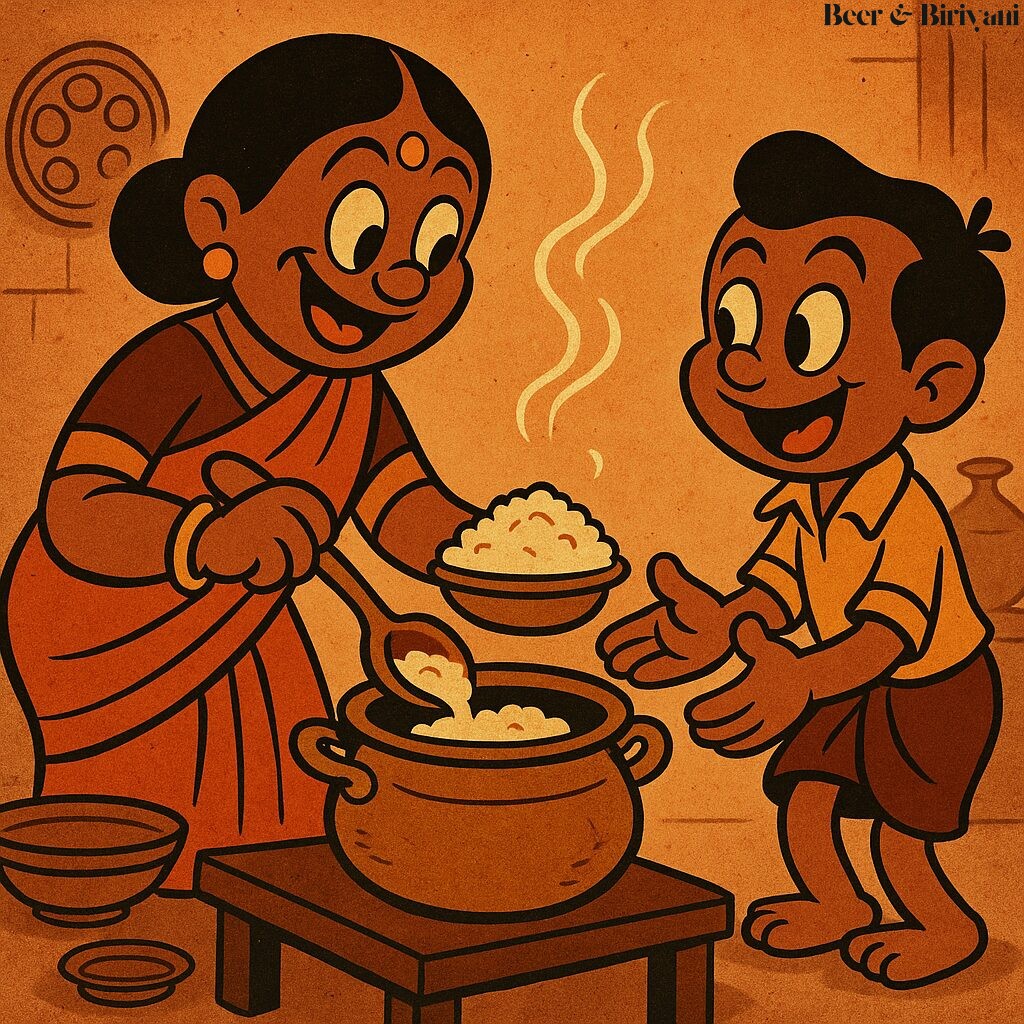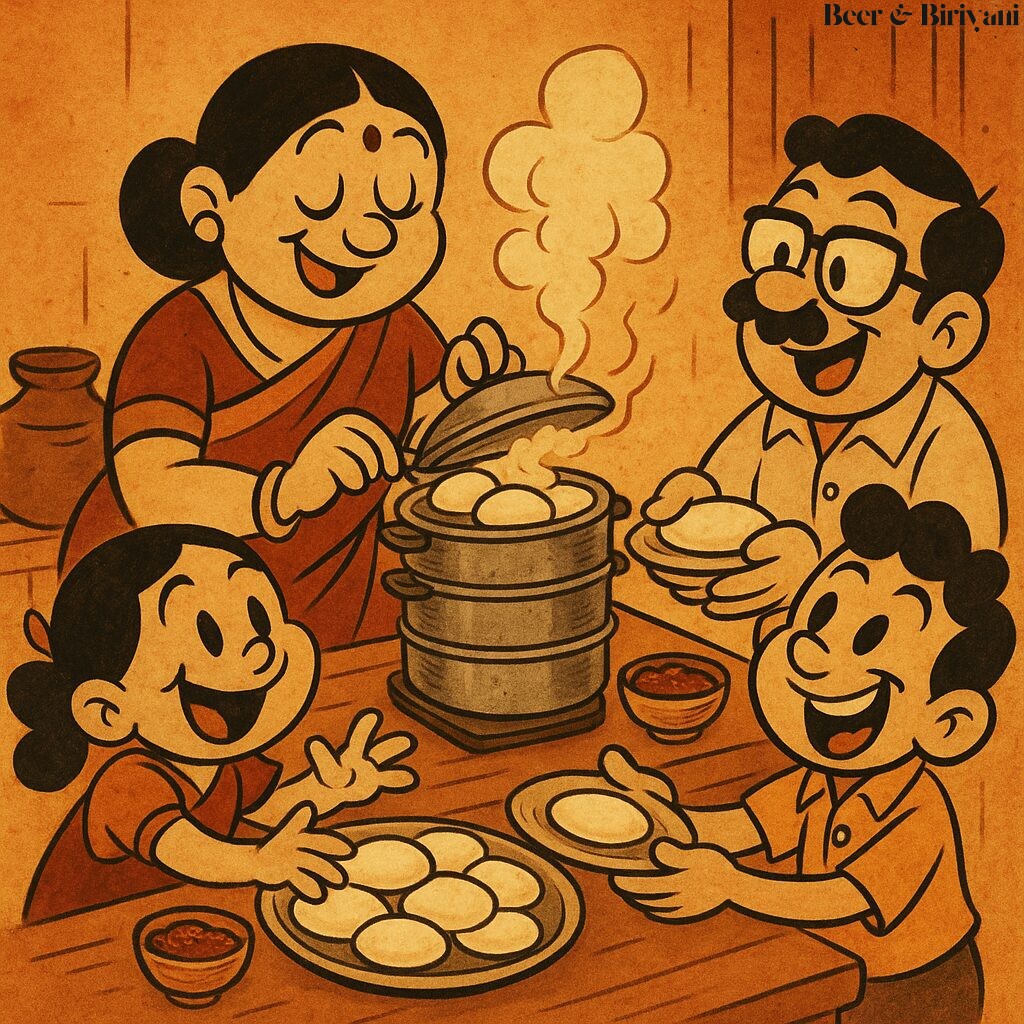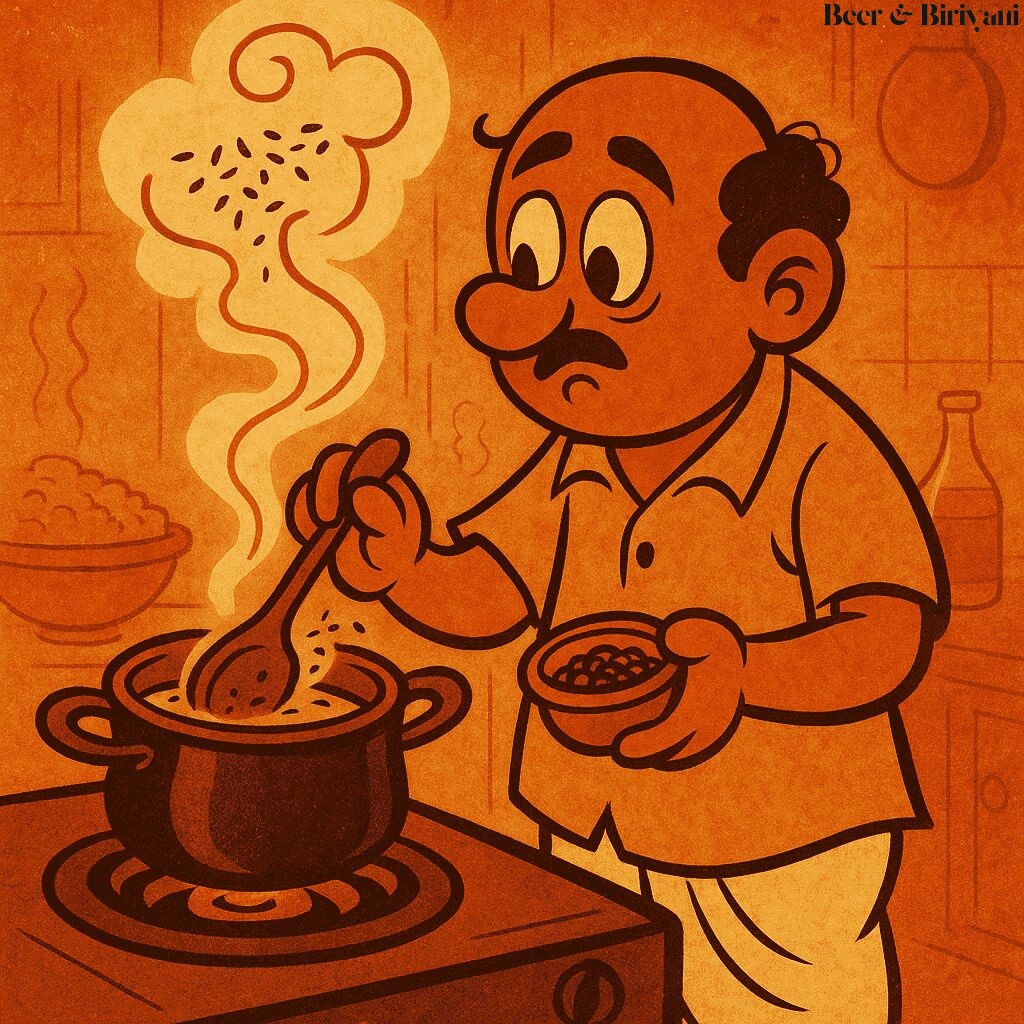The Rice That Tastes Like Home
It always starts with the first whistle. Somewhere between the low hiss of the cooker building pressure and the first sharp cry of steam, a memory sneaks in. I might be standing in my Austin kitchen, sautéing onions or pouring out dosa batter, but in that moment I am also seven years old again, hanging around our kitchen in Mumbai, watching my mother inspect a handful of sona masuri like she’s reading fortunes in tea leaves.
This rice—specifically, sona masuri—is not just a grain in our family. It’s a passport. A scent-memory. A texture map to the past. And no matter how many fancy short-grain sushi packs or jasmine rice bags line the shelves at my local H-E-B, I find myself returning to the 10-pound burlap sack with Telugu writing on the side like it’s a long-lost cousin.
Beyond Basmati: The Unsung Hero of Southern Kitchens
Most people associate Indian rice with basmati, the lanky prom queen of the grain world. Fluffy, fragrant, good with everything. But in South Indian homes, sona masuri is the quiet workhorse that shows up day after day, ready to support your sambar, rasam, or a messy spoonful of yogurt. It’s medium-grain, softer, and—when cooked just right—sticks together with the kind of enthusiasm that makes scooping up curry easier with your fingers.
Back home in Mumbai, where the cultural overlap between Andhra tiffin centers and Tamil messes is deliciously messy, sona masuri was what went into the pressure cooker almost every night. Basmati was saved for guests, biryani, or weddings—occasions that required pomp. Sona masuri was dinner. It was routine. It was comfort in a steel plate, often sitting beside whatever vegetable had been guilt-tripped into being cooked that day.
A Grain of Emotion
After I moved to the US, the thing I missed most—other than the obvious chaotic perfection of Mumbai—was the smell of freshly steamed rice wafting through our old kitchen. The smell was the first to go. Then the texture. Then the feel of rice still a little warm as it caught the cool of curd or the heat of pickle.
Cooking sona masuri here feels like trying to hum a lullaby in a different key. The water’s different. The rice is aged differently. The pressure cooker now comes with twenty safety features and looks like it’s built to launch satellites. But still, I do it. Rinse it three times. Add 1.5 cups of water to every cup of rice. A dash of ghee if I’m feeling indulgent. And as that familiar smell fills my American apartment, I get quiet. Because this isn’t just dinner—it’s translation. I’m not just feeding myself; I’m interpreting home through a grain.
From Kurnool to Kroger
Sona masuri is primarily grown in the states of Andhra Pradesh and Telangana, often in regions like Kurnool and Warangal, where rice farming has shaped communities for centuries. It’s a hybrid variety—born from a cross between Sona and Mahsuri strains—that gained popularity for being lightweight and low-starch. Which, to most Americans, probably doesn’t mean much. But to my mother, it meant less stickiness on the fingers and easier digestion after a second helping of pappu.
The diaspora trail means that this grain has now followed us into Indian grocery stores in Dallas, Detroit, and San Jose. Walk into any Patel Brothers or Subzi Mandi, and you’ll find at least four brands of sona masuri, usually stacked beside bags of idli rice, ponni, and every possible permutation of basmati. The trick is knowing which one smells like your childhood. (Pro tip: try to get the one from Karnataka if you like a slightly fluffier finish. My loyalty, however, stays with the Andhra-grown stuff.)
The Everyday Luxury
There’s something oddly luxurious about routine when you live far from where you began. In a world where we’re always searching for the next new thing, the old things become anchors. Sona masuri is mine. It may not carry the fragrance of basmati or the glamour of sushi rice, but it carries something more durable—muscle memory, family lore, and the precise taste of Tuesday dinners after homework and before the 9 PM Doordarshan serial.
My Texan friends find it hard to understand why I won’t switch to quick-cooking microwave pouches. Or why I avoid rinsing rice just once. “It’s just starch,” they say. But it’s not. It’s years of my mother quietly teaching me the right way to wash rice until the water runs clear. It’s the soft resistance of perfectly cooked rice when pressed between fingers. It’s the way the smell hugs the walls of a home you thought was foreign until the cooker whistled.
Memory Served Hot
Some days, when I’m homesick, I don’t call home. I make rice.
Not fancy biryani. Not tomato rice. Just plain steamed sona masuri with a side of mango pickle and maybe a fried egg. The first bite always confirms what I suspected: that memory doesn’t need grand gestures. It only needs the right grain, cooked in the right pot, under the right kind of longing.
And suddenly, home isn’t 9,000 miles away. It’s right here, in the steam rising from my plate.
Born in Mumbai, now stir-frying feelings in Texas. Writes about food, memory, and the messy magic in between — mostly to stay hungry, sometimes just to stay sane.












